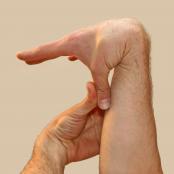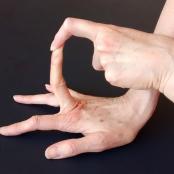
Hypermobility is a connective tissue condition (usually inherited) in which the body’s collagen is more elastic than the ‘norm’, leading to increased flexibility. For some people, notably musicians, gymnasts, dancers and sports people, this natural flexibility gives a very useful advantage, though it leaves them more prone to injuries such as sprains and dislocations. In others it can cause clumsiness, lack of spatial awareness and joint pain.
Sometimes hypermobility can lead to debilitating chronic pain, known as Hypermobility Spectrum Disorder (HSD) or Hypermobility type Ehlers-Danlos Syndrome (hEDS).
Amongst health care professionals, the Alexander Technique is increasingly recognised as helpful in developing strategies to deal with HSD and other hypermobility problems.
With the Alexander Technique you can learn:
- How your body is designed to function so that you can work with the design rather than against it.
- How to be comfortable in your body, whether at rest or in movement. With hypermobile joints, sitting and standing often involve ‘locking’ joints at one end of their range of movement as a way of stabilising them. This is bad news for your ligaments and tendons, and actually weakens them over time. The Alexander Technique teaches you how to avoid the locking and yet be able to sit or stand comfortably, in balance, with much less effort.
- How to prevent misuse and overuse - such as overstretching when doing exercises, or holding excessive muscular tension - and how to move with ease in daily life.
- How, as tension reduces, your balance and co-ordination can improve.
- To develop a reliable body awareness.
AT lessons may also contribute to an improved postural muscle tone (the normal state of balanced tension in the postural muscles) which can help to stabilise the torso. To find out more about research on the effect of Alexander Technique lessons on muscle tone, click here.
The HMSA Journal published an informative article in spring 2015 with information on the Alexander Technique and Hypermobility, by Dr. Philip Bull. You can access the article here.
In cases of severe hEDS the Alexander Technique may work best alongside a structured exercise programme to gently build strength and stamina. The two work very well together.
For more information on hEDS please visit the Hypermobility Syndromes Association.
Or EDS-UK


